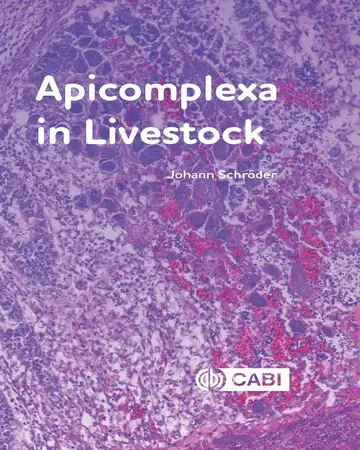Apicomplexa in Livestock

Apicomplexa in Livestock PDF, The Apicomplexa is a globally prevalent group of parasitic protozoa that cause disease, from malaria in humans to livestock diseases such as coccidiosis, babesiosis (Red Water, Tick Fever) and East Coast Fever. With significant economic impacts, a number of Apicomplexa are also zoonotic, leading to grave potential public health consequences.
Infection prevention efforts by immunisation or management of arthropod vector infestation have not been universally successful, and can have knock-on effects such as pollution of the environment and human food chain, and development of insecticidal or acaricidal resistance. This book highlights the similarities and differences between the various Apicomplexa infections, identifying those of greatest significance and suggesting sustainable approaches to better manage their impact on livestock productivity. The book:
· Reviews Australian livestock as a case study, but highlights global applications, biosecurity concerns and lessons learned;
· Covers Apicomplexa-caused disease across cattle, pigs, poultry and sheep;
· Considers human health and environmental impacts, and how sustainable management methods can better outcomes for all.
Suitable for researchers and students of veterinary parasitology and related disciplines, this book is a valuable resource covering this important set of parasites.
Related Book: Avian Malaria and Related Parasites in the Tropics
This phylum of parasitic protozoa is named for the group of organelles they all share, that enable infective stages to enter their host cells. They vary in the risk they pose to economical livestock production, native wildlife survival and public health. Based on their life histories, this review arbitrarily groups them into those with a direct life cycle, those with an intermediate or prey host and those that have an arthropod vector.
Evolving imaging technology, augmented by immunological and molecular advances, has seen more than a century of development in the way these parasites are identified and taxonomically classified. The latter two technologies have also enabled the identification of previously unrecognized antigenic proteins, many of which are shared between genera, and some of which hold immunogenic potential, and novel putative targets for management intervention using chemical control.
Direct Link For Paid Membership: –
